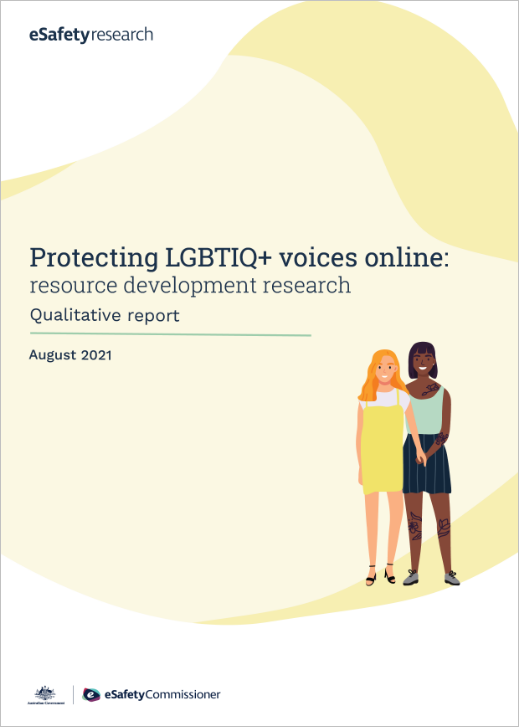Protecting LGBTIQ+ voices online

The findings are based on group discussions with relevant community service providers and advocacy organisations, plus interviews with LGBTIQ+ adults.
It can be difficult for people who identify as LGBTIQ+ to know how to set personal boundaries with others online. Education is also needed to explain the language used to describe online abuse.
The report highlights a range of abuse from scams to dismissive comments and harassment on social media.
Key findings
Adult cyber abuse and lateral abuse
Main observations:
- Many abusers experience discrimination themselves and lack empathy for those being targeted.
- The type of abuse varies according to gender, ethnicity and sexual orientation.
- It can be hard to know the difference between acceptable behaviour and abuse – especially when using casual sex apps.
Understanding the main terms
- Community service providers generally understand the meaning of 'adult cyber abuse'. This term is not widely understood among LGBTIQ+ adults.
- Both groups (service providers and LGBTIQ+ adults) are mostly unclear about the definition of 'lateral abuse'.
Key recommendations
- Develop resources for the LGBTIQ+ community to increase awareness about online safety.
- Provide information about the different types of online abuse and how to respond to negative behaviour.
- Prioritise support for young people and marginalised groups, like Aboriginal and Torres Strait Islander peoples.
